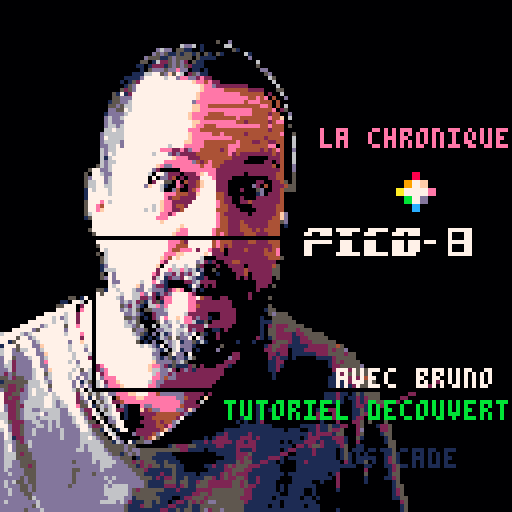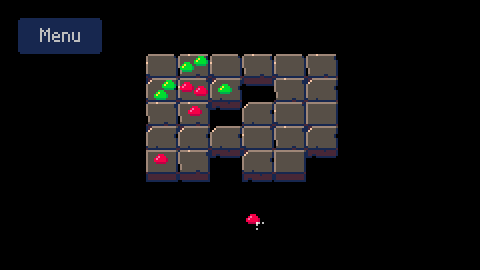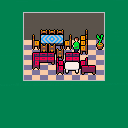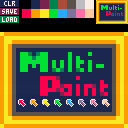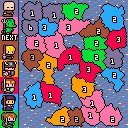Picotronlike for backend
I’ve been spending some time trying to figure out a good design for how to let people build online services in the style of pico-8 or picotron.
If you are anything like me you want to see code before reading more:
MAX_MESSAGES = 5
function _serve(request, context, user)
if not context then
context = {
messages = {}
}
end
if request.query.post then
local timestamp = os.date("%Y-%m-%d %H:%M:%S")
if not user then
user = {
name = request.query.user
}
end
user.last_post = timestamp
local newMessage = {
user = user.name,
text = request.query.post,
timestamp = timestamp
}
table.insert(context.messages, newMessage)
if #context.messages > MAX_MESSAGES then
table.remove(context.messages, 1)
[ [size=16][color=#ffaabb] [ Continue Reading.. ] [/color][/size] ](/bbs/?pid=146648#p) |
My first Picotron project. It's a clone of a game called Chain Reaction I used to play on my C64 back in the day.
It's a two player game where you take turns in placing orbs on a tile grid. The object is to be the only player with orbs left on the board. Orbs can be placed on empty tiles and tiles where the player already has orbs. When there are one fewer orbs on one tile than there are neighbouring tiles the tile is said to be critical. Adding another orb to a critical tile will make the orbs splode. The orbs will be added to the neighbouring tiles. If they are occupied by the opponents orbs these change color.
Just try it, you'll understand despite my poor explanation.
TODO:
This is perhaps a bit off topic, or maybe not.
I just deployed a rough, first version of an online pixelart drawing app: https://pixla.nu/?ps=DyIAIQESCSIBIIICIRILIoEgAg8iACENIgACNiIBAAACCyIAIAF3AHALIgAHAncAAgoihAcAcAcCCiKEBwBwBwIKIgAHAncAAgoihAdwAHcCCiKDIHAAcAsigyB4gHALIgAHAXcAcAUiBBEAEAJ3AHALEQIAAAF_EUUR
It's meant to be limited in features, a little bit like pico-8 actually. The canvas size is fixed to 32x32, and the palette is fixed to the (original) pico-8 palette. Left button draws, right button picks up the color under the mouse.
Perhaps the most special thing is that the pixels are saved in the URL, so the images can be saved by simply bookmarking the page. The links are also easily shared on social media, and the preview includes the image.
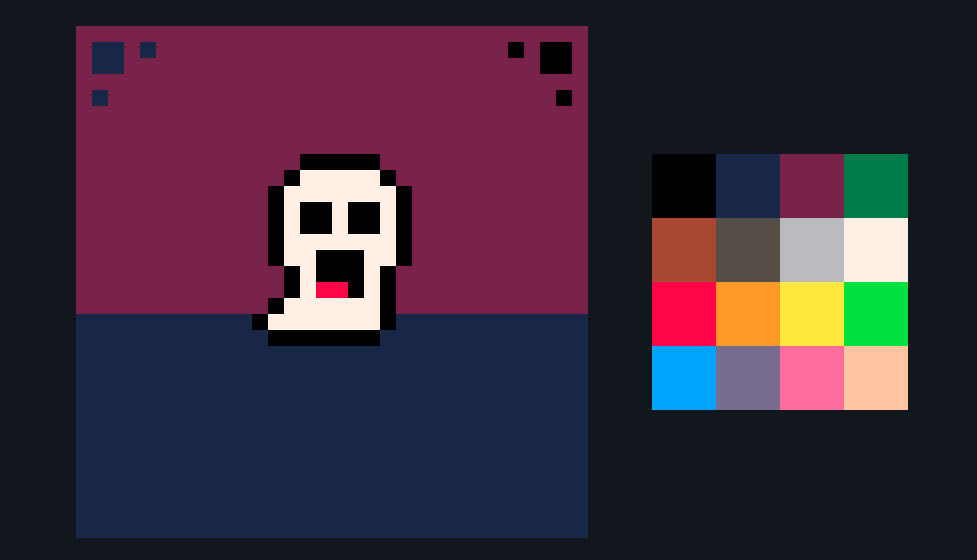
If it's not clear from the screenshot, I can't draw. So I hope some people with some pixel art skills will find the tool fun and useful. Please try it out, and let me know of any problems or feature requests you might have!
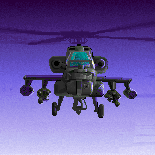
I've been using PICO-8 to prototype a potential game for the Commodore 64. It's mostly testing out the graphics and exporting the tiles, map and sprites to asm source code. In the end having the wrong palette made things too confusing for me.
So I bring you PICO-64:
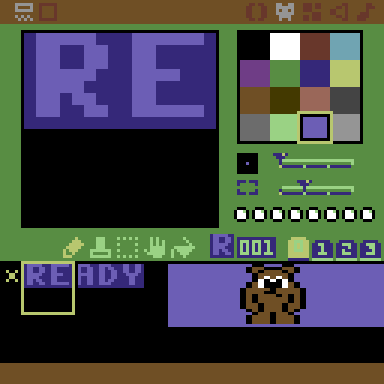
It is just PICO-8 with the palette changed into that of the VIC-II, the graphics chip of the Commodore 64.
On OS X the palette that PICO-8 is using is in the binary PICO-8.app/Contents/MacOS/pico8.dat file. Just search and replace to change. I used macvim and the Tools/Convert to HEX and Convert Back.
These colors:
1d2b53 7e2553 008751 ab5236 5f574f c2c3c7 fff1e8 ff004d ffa300 ffec27 00e436 29adff 83769c ff77a8 ffccaa |
Needs to be changed into these (Pepto's VIC-II palette):
ffffff 68372b 70a4b2 6f3d86 588d43 352879 b8c76f 6f4f25 433900 9a6759 444444 6c6c6c 9ad284 6c5eb5 959595 |
To overcome the small screen I have been using PICO-8's mouse feature to scroll around a 320x200 pixel screen. Not optimal, but still usable.
If you try this out and start hacking binary files, don't blame me if something breaks!








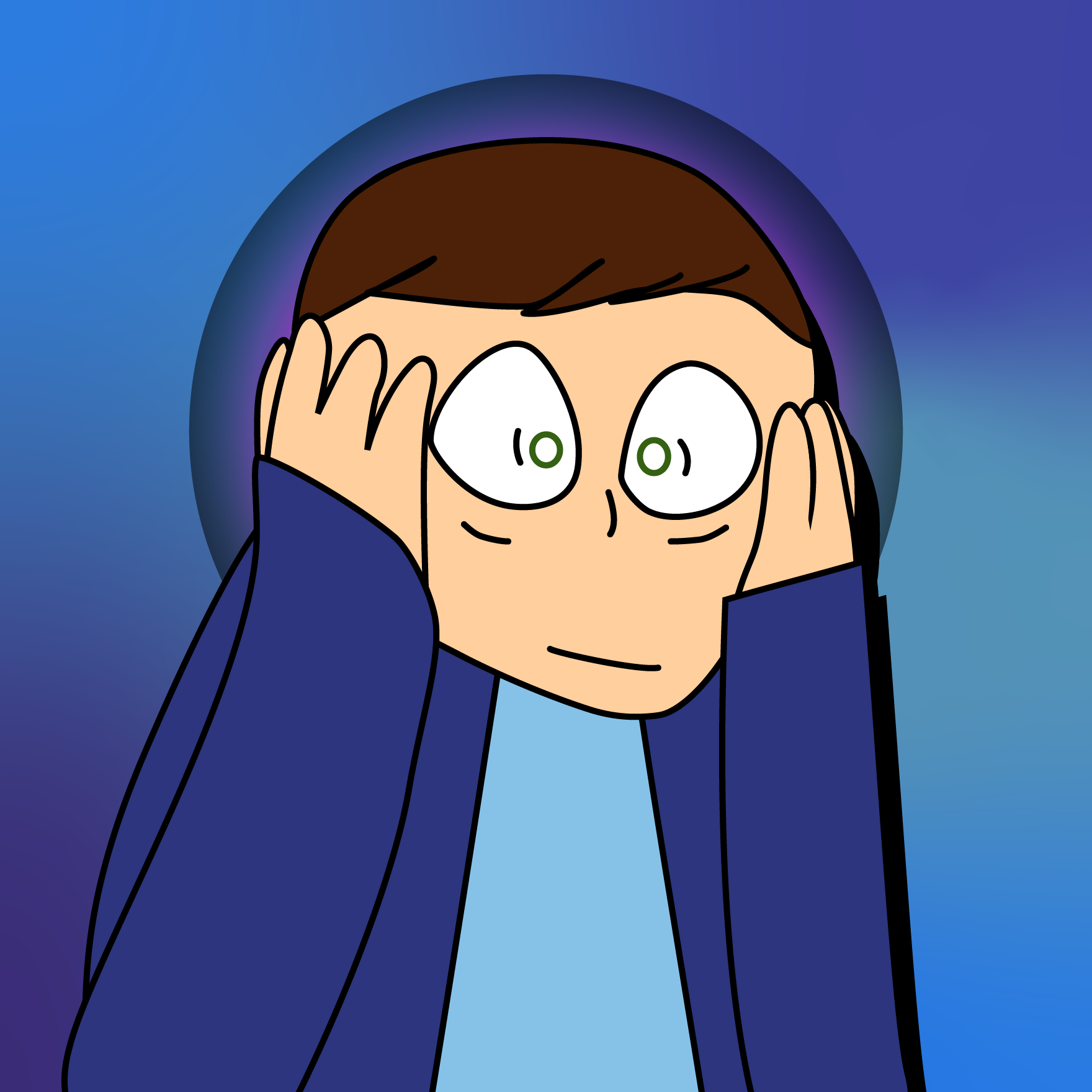
So you have seven friends over and are in a hurry to make a 32x24 pixel artwork?
Before this cart it was not obvious how to handle the situation. Now it's easy. The eight of you can work together in Multi Paint!
This came to be because I'm working on a GalCon clone, and I wasn't happy with the controls. So I started making a cursor, but then I thought it would be cool with a "mouse pointer" for each player when playing multi player. When that was working I wanted to make something simple with it, so it became this rudimentary pixel art cart. The only fancy part is that you can use a foreground color with the first button, and then a background color with the second button, just like Deluxe Paint on the Amiga.
(Edit: I used the save @clip feature of pico-8 0.1.9b, but I noticed that I couldn't play it on the pocketchip. Now I saved a .p8.png old school style. Hope that works better. I also changed the cartridge label to a hopefully more selling one. )
This is my first pico-8 project, and also my first venture into LUA land. It is a game heavily inspired by Dice Wars by Taro Ito.
The characters are inspired by the main character in Kingdom of Nerea by Davit Mazia.
The game is not yet done, but perfectly playable. Please try it, and give me all the feedback you have. What's good, what's bad, what's missing, what's confusing?
Any feedback is greatly appreciated!












 4 comments
4 comments

